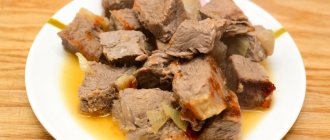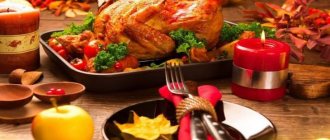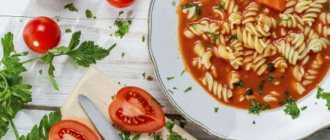Diet number 10
For hypertension and compensatory heart diseases, as well as for insufficient blood circulation, diet number 10 is indicated. It involves avoiding all high-calorie foods and salt, or minimizing its consumption. In addition, you need to reduce your fluid intake and try to limit yourself to those foods that stimulate the nervous or cardiovascular system, and also have an irritating effect on the kidneys and liver. These are foods high in cholesterol, high in magnesium, potassium, and those that cause flatulence.
In this situation, it is necessary to distribute meals so that there are at least five meals per day. The ideal portion should fit in the palm of your hand. Thus, meals during diet number 10 should be small and frequent.
ON TOPIC: Fun diet for weight loss
You will have to completely abandon the following products:
- pancakes and pancakes, especially homemade ones;
- broths, moreover, both meat and fish or mushroom;
- legume-based soups;
- fatty meat and fish;
- soft-boiled or fried eggs;
- fatty or very salty cheeses;
- coffee and cocoa;
- alcoholic drinks, including low-alcohol ones;
- lamb, beef or pork fats.
This diet should consist of soups and vegetarian dishes, such as salads or stews. Meat is also needed, but only in boiled or baked form. Lean fish, beef and chicken are allowed. All dishes can be prepared either with water or skim milk.
Diet No. 1
For acute or erosive gastritis, patients are shown table 1. The essence of this diet is to protect the stomach from mechanical, chemical and thermal irritants. Therefore, all food should be warm, semi-solid or liquid and not stimulate the production of hydrochloric acid.
In the first days of exacerbation of the disease, patients are prescribed the most strict diet No. 1a and only after the intensity of the main symptoms decreases they switch to diet 1 for gastritis. Therefore, in the first days, patients eat:
- semolina or rice soups;
- jelly;
- milk;
- porridge.
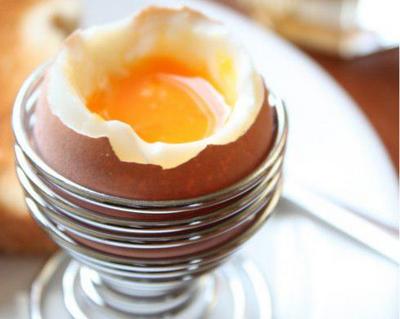
Healthy breakfast - soft-boiled egg
Tip: if the disease worsens, you can eat 2 soft-boiled eggs in the morning.
During the subsiding stage, patients are recommended to eat:
- mucous, milk and vegetable soups;
- dry biscuits, dried white bread;
- cottage cheese, unsalted cheese;
- dairy products;
- non-acidic kefir or yogurt;
- lean fish;
- boiled meat without films;
- eggs;
- carrots, cauliflower, beets, potatoes;
- boiled fruits;
- porridge, with the exception of wheat, barley, corn;
- compotes and jelly;
- tea, weak cocoa;
- honey, marshmallows, jam.
Attention! Under no circumstances should you consume legumes during exacerbations of gastritis.
Since proper nutrition for gastritis involves avoiding the use of spices, you can add aroma and taste to bland food with the help of parsley, celery, dill and other herbs.
Diet number 5: menu
It should be noted that diet number 5 is considered one of the fifteen main types of dietary systems. This nutrition is designed to maintain normal functioning of the gallbladder and bile ducts. This diet also helps improve liver health.
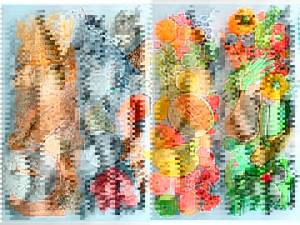
By reducing calories in the diet and reducing fat content, staying on diet number 5 is usually accompanied by weight loss. It is necessary to completely exclude products that contain oxalic acid and essential oils. The following are prohibited:
- fried pies;
- broth-based soups, cabbage soup or okroshka;
- fatty meat or fish;
- fatty dairy products;
- legumes;
- chocolate, ice cream and other sweets;
- smoked and spiced foods or spicy snacks;
- coffee, cocoa;
- alcohol, including low-alcohol drinks.
Salt consumption should not exceed the norm of 10 grams per day. Despite such restrictions, the diet can be very varied.
Diet table No. 5 according to Pevzner - what you can and cannot eat, food table and menu
This way you can stock up on the necessary products and select recipes, and preparing dishes will take less time. Exact adherence to all diet rules will protect against exacerbation of the disease and speed up recovery. To make it easier to create your diet, you can consider a ready-made sample menu and recipes for it.
Breakfast: semolina pudding, tea with milk. Buckwheat: boil the buckwheat well in a large amount of water. Grate the cottage cheese, add a tablespoon of sugar, ml of milk and one egg, mix everything. Combine the porridge and curd mass and bake under foil until fully cooked.
Casserole: cook viscous semolina porridge and cool it with cereal. Add one and a half eggs, sugar, raisins or chopped prunes to the semolina. Beat everything well and bake in a greased pan until done. Lunch: salad of cucumbers, lettuce and carrots. Meat soufflé: mince 1 g of boiled beef 2 times and mix with 1 yolk.
Pour ml of milk into the minced meat and mix.
Successful therapy of any organ requires a reduction in the functional load on it, through sometimes significant correction of the diet. Under conditions of a gentle diet, the digestive system is restored and stabilized over time, after which the patient feels significant relief.
Beat 2 egg whites into a thick foam and carefully mix them with the meat. Steam the soufflé. Based on appetite, you can add snacks, second breakfast and afternoon snack. This is a sample menu for the week; you can make your own adjustments to it or come up with your own personal recipes.
The main thing is not to deviate from the rules: eat only warm food from permitted ingredients in small portions. Diet 5a according to Pevzner is prescribed during periods of exacerbation of pancreatitis, cholecystitis, and cholelithiasis.
It is used in cases of combination of these diseases with gastritis and peptic ulcer. The diet ensures maximum rest for the liver and gall bladder, spares the gastrointestinal tract, and facilitates the functioning of the bile ducts.
This diet option differs from the fifth table in even greater mechanical and chemical sparing. All dishes should be soft, pureed, slimy and mushy. The list of products remains the same, only with greater restrictions.
Soups should be light, with finely chopped or grated vegetables and pureed cereals. You can add boiled vermicelli and a little milk to them. Types with a high fiber content are excluded from fruits and vegetables; the consumption of quince and pear, as well as all varieties of cabbage, is not recommended. Millet is prohibited from cereals. It is also not recommended to consume veal and young chickens.
As for bakery products, it is preferable to eat no more than three pieces per day of dried bread made from second-grade flour. Desserts and drinks remain the same as in the previous version. The menu for table 5a will consist of cereals, boiled vegetables, mashed potatoes, meat and vegetarian soups. You can prepare souffles, jelly, jellies, puddings, steamed cutlets and meatballs.
It is important to eat the necessary proteins, fats and carbohydrates every day. It is forbidden to go hungry or eat too much. Table 5a is prescribed until improvement occurs, then switches to another diet.
It is strictly not recommended to independently adjust the diet during exacerbations of diseases. This option is used in patients at the recovery stage after an attack of acute pancreatitis or in the remission phase after an exacerbation of chronic pancreatitis. The list of products remains the same as for table 5a. The food served should be warm and well chopped. The main restrictions concern fatty foods and sugar, which is replaced with sweeteners, preferably stevia. The following are strictly prohibited: alcoholic and carbonated drinks, caffeine, sweets, flour except dried wheat bread, smoked foods, fried foods, pickles, raw fruits and vegetables.
Low-fat dairy products are added to dishes; pureed cottage cheese, preferably calcined, is allowed. The diet consists of meals in small portions. The patient should eat a little food every .5 hours. Approximately kcal per day.
Features of diet and nutrition table number 5
Everything is boiled, steamed or baked without crust while warm. Salt is limited to 8 g per day. The main difference is more frequent meals and increased mechanical sparing. This option can be used for patients with concomitant chronic gastritis.
Diet number 3
Having problems with the intestines, a person quite often suffers from constipation, diarrhea, bloating, abdominal pain and other unpleasant symptoms of dysbiosis. This, in turn, weakens the body's immunity. To support and optimize intestinal function, diet number 3 has been developed.
Read how to treat diarrhea at home
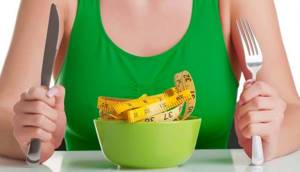
Dishes that cause putrefactive processes or fermentation in the intestines are excluded here. You need to eat something that activates peristalsis in all parts of the intestine. Food should be chopped whenever possible. Salt and spices should be eliminated completely if possible. It is advisable not to eat food that is too cold or, on the contrary, too hot, but to eat dishes at room temperature.
Any diet has its own characteristics and rules, strict adherence to which guarantees effectiveness. But we must not forget that diet itself is not a panacea for all diseases.
It is also worth considering that the diets presented above will help you lose weight in a relatively short time.
Indications
The diet is a special nutrition plan that helps alleviate the condition of diseases of the gastrointestinal tract: gall bladder, liver, biliary tract. It helps to improve the health of the body. For 1.5-2 years, nutrition follows the basic rules developed to treat such problems.
This diet is prescribed in the following cases:
- chronic hepatitis;
- cholecystitis;
- cirrhosis of the liver;
- urolithiasis disease;
- gallbladder diseases;
- gout;
- pancreatitis;
- cholelithiasis;
The main objective of the “table No. 5” diet is to create a balanced and gentle diet that helps restore the functions of the gastrointestinal tract. The diet includes only those foods that do not burden the stomach and pancreas, but at the same time stimulate intestinal activity, increase the flow of bile and help reduce cholesterol.
Basic Rules
When following a dietary diet, you must adhere to the following recommendations of nutritionists:
- Limit the consumption of fats , while maintaining a balance between the consumption of proteins and carbohydrates.
- The diet should include foods rich in fiber and pectin, while the product is processed only in the form of boiling, steaming or stewing.
- Meals should be divided into 4-6 parts. Portions are limited, and all food is chopped as much as possible.
- There should be at least 1.5-2 liters of liquid per day
- The maximum amount of salt is 10 g per day. It is worth taking into account all products that already contain salt.
- It is necessary to eat food only when it is warm. Cold and too hot foods should not be consumed, since a lot of effort is spent on digesting them.
- It is worth adhering to the principle of fractional meals ; there must be an interval between meals of about 2-2.5 hours.
- Under no circumstances should you be allowed to feel intense hunger. You should snack on fresh fruits or vegetables.
Even if a person is aware of the diseases that he has, it is necessary to adhere to a diet and carry out treatment only under the supervision of a specialist.
The daily intake of substances includes:
- About 85-90 g of proteins.
- Minimum fat – up to 80 g.
- Up to 350-400 g of carbohydrates.
- around 2500 kcal .
